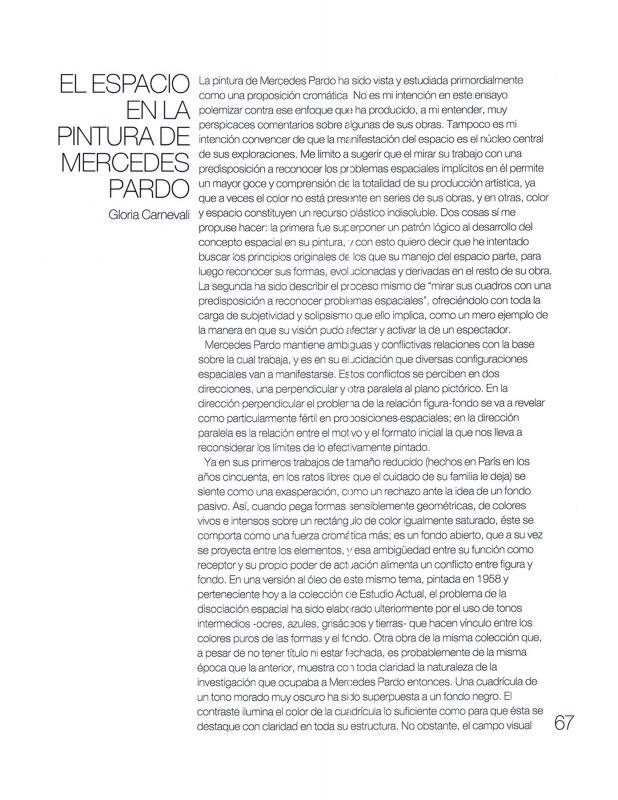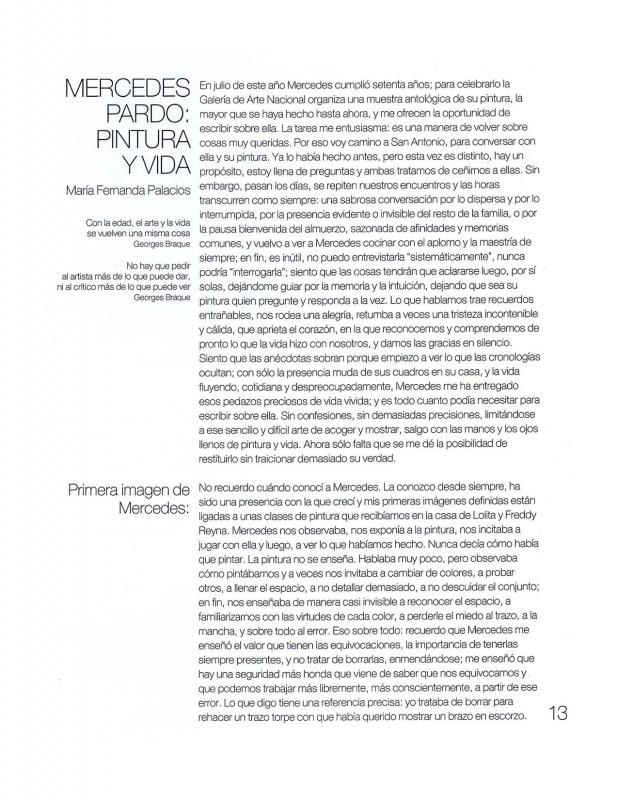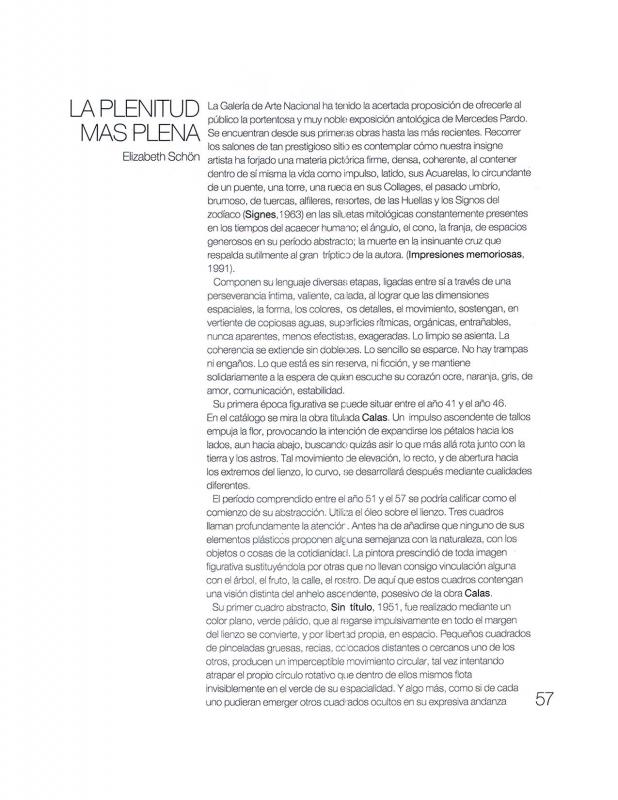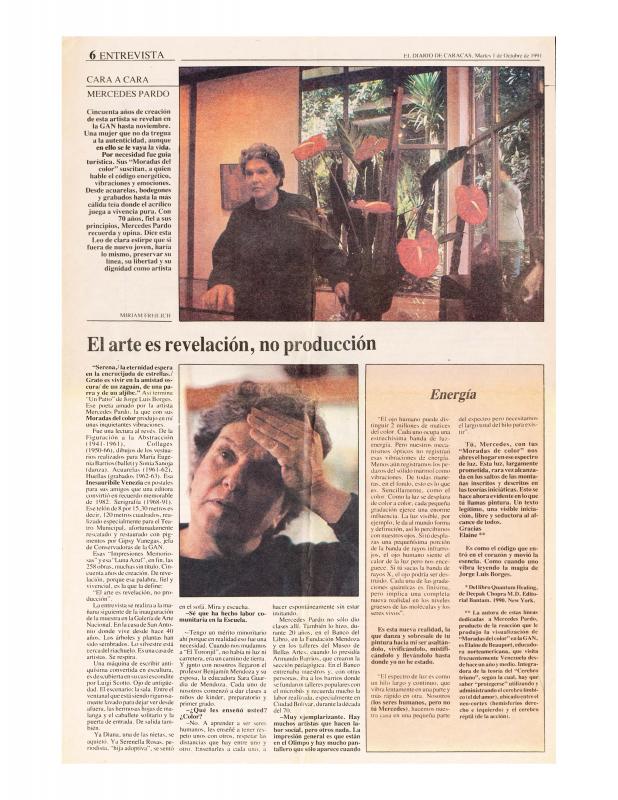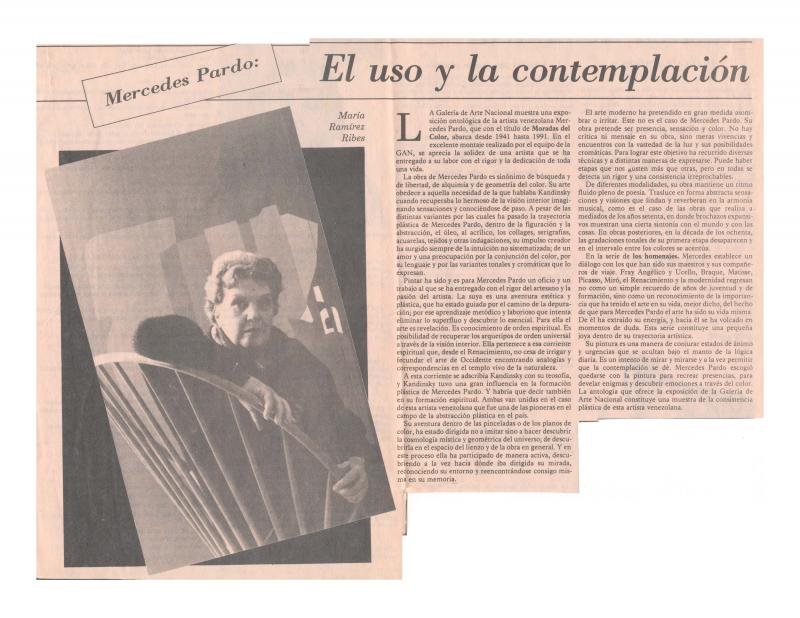In this article from September 1991, El Nacional publishes an excerpt of an essay for the exhibition catalogue Mercedes Pardo: moradas del color, a 1991 retrospective at the GAN (Galeria de Arte Nacional) in Caracas. The newspaper selected three sections of the long text in which the poet and essayist María Fernanda Palacios (b. 1945) perceives her abstract approach to painting. The full essay in the exhibition catalogue is an extensive discussion of the key stages of art production in Mercedes Pardo (1921–2005). Indeed, the text stems from a dialogue between the artist and the author, so that Palacios’s critical appraisals are based on a simultaneous grasp of Pardo as both a painter and a woman.
“Landscapes: Soul and Geography” is in fact a mixing of two different sections of the original text: a part of “Landscapes” and the entire section titled “Soul and Geography.” Palacios discusses how (in modern painting) landscapes have become a “sensorial memory of forms, pigments, textures, rhythms,” and are no longer a representation of the land or a projection of the artist’s feelings into a given landscape. “Painting as Home,” in turn, appears in the exhibition catalogue as “Climates: The Atelier of a Painter, Painting as Home,” and discusses painting as a space that the artist inhabits under the equation (positive and/or negative) of art and life. The third section coined “Reticence and Solidarity,” appears later in the original, just after a detailed analysis of Pardo’s education and first approaches to abstraction, while straddling between Caracas and Paris. To be updated, according to the text, artists must follow their own rhythm and not the one that history uses to impose. This article is introduced by Georges Braque’s quote: “With age, art and life become one and the same.” Other sections include several artists’ quotes as well, most of which are by Braque. This French pioneer of Cubism was of great influence on Pardo’s work, and, in Moradas del color, one of the paintings is titled Homenaje a Georges Braque (1985), an acrylic in which she mirrors both his color palette and his attention to geometry.
With regard to the essays published in the exhibition catalogue of Mercedes Pardo: moradas del color, see, in the ICAA Digital Archive, Gloria Carnevali, “El Espacio en la pintura de Mercedes Pardo” (doc. no. 1102285); María Fernanda Palacios, “Pintura y vida” (doc. no. 1102253); and Elizabeth Schön, “La plenitud más plena” (doc. no. 1102269). For reviews of Moradas de color, see Miriam Freilich, “El arte es revelación, no producción” (doc. no. 1325266); and María Ramírez Ribes, “El uso y la contemplación” (doc. no. 1331187).

